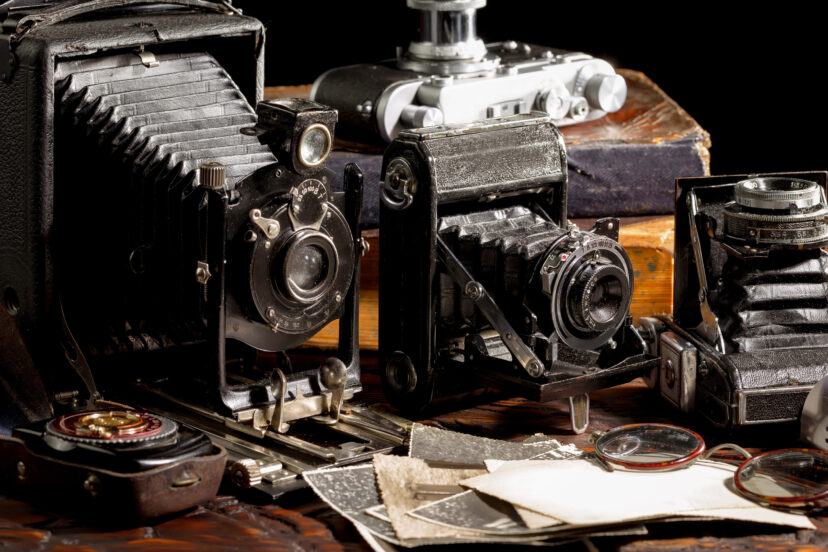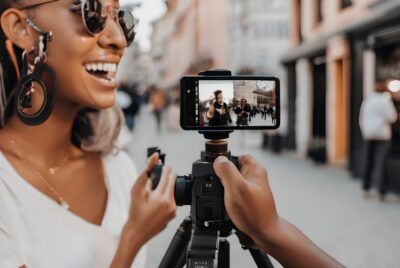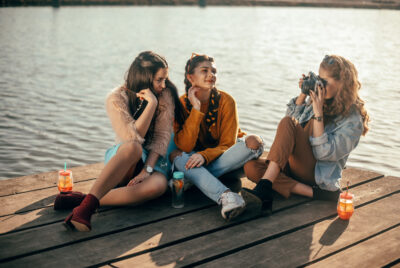History of Photography
Introduction to the Journey
Hey there! If you’re anything like me, you’ve probably picked up a camera and marveled at the magic of capturing a moment. But have you ever wondered how it all started? Let me take you on an incredible ride through the history of photography, from shadowy boxes to smartphone selfies.
The Birth of Photography
Before photography was a household term, the idea of capturing light itself was pure science fiction. Yet, the seeds were already being planted.
The Camera Obscura Era
The earliest ancestor of photography was the camera obscura, a dark box or room with a small hole that projected an image of the outside world onto a surface inside. Artists used this tool as early as the 11th century to help with drawing—pretty clever, right?
The Daguerreotype Breakthrough
Then came 1839, and boom—Louis Daguerre unveiled the daguerreotype to the world. This was the first publicly announced photographic process that produced detailed images on a silvered copper plate. It wasn’t exactly a selfie you’d post online, but for the 1800s, it was groundbreaking.
Photography in the 19th Century
As the 1800s rolled on, so did the technology. Photographers were now experimenting with new methods that were more flexible and faster.
Wet Plate Collodion Process
In 1851, Frederick Scott Archer introduced the wet plate process, which allowed for sharper images and shorter exposure times. The catch? Photographers had to prepare, expose, and develop the image all before the plate dried—talk about pressure!
The Rise of Portrait Studios
Thanks to these innovations, portrait studios popped up everywhere. For the first time, everyday folks could afford to have their likeness captured—not just kings and queens.
The First War Photographs
And then there was war. During the Crimean War and the American Civil War, photographers like Roger Fenton and Mathew Brady risked their lives to document history in real time. Their haunting images gave the public a raw look at the realities of conflict.
The Evolution in the 20th Century
The 20th century brought innovation after innovation. Cameras were becoming more compact, faster, and smarter.
The Kodak Revolution
It’s impossible to talk photography without mentioning George Eastman and Kodak. In 1888, Kodak released a camera preloaded with film and the slogan: “You press the button, we do the rest.” This made photography available to the masses.
The Birth of Color Photography
Color photography had been brewing for a while, but it wasn’t until the 1930s that Kodachrome film brought rich, vivid hues to life. Suddenly, the world looked a lot more vibrant.
Photojournalism Comes to Life
With faster shutters and better film, photojournalists were able to tell compelling stories. Think Robert Capa’s D-Day landings or Dorothea Lange’s Depression-era portraits. Their lenses brought truth to the forefront.
Photography as an Art Form
At some point, people started asking, “Can photography be art?” Spoiler alert: yes, absolutely.
>>> best deals on camera kits CLICK HERE <<<
Pictorialism and Modernism
The Pictorialist movement in the late 1800s aimed to make photos look like paintings, soft and romantic. Then came Modernists who said, “Nah, let’s celebrate sharpness, angles, and realness.”
The Influence of Iconic Photographers
Photographers like Ansel Adams, Henri Cartier-Bresson, and Diane Arbus turned the lens into a paintbrush. Their works continue to inspire photographers worldwide—including me!
The Digital Revolution
Then came the biggest shake-up of them all: digital photography.
From Film to Digital
Digital sensors replaced film, memory cards replaced rolls, and suddenly you could take thousands of photos without worrying about cost. Companies like Canon, Nikon, and Sony led the charge.
The Smartphone Era
Let’s be honest—most of us shoot more with our phones than actual cameras now. iPhones, Pixels, and Samsungs have turned everyone into a casual photographer. And the quality? Better than some DSLRs from just a decade ago!
Photography in the 21st Century
Photography today is more than just pressing a button—it’s become interactive, intelligent, and lightning-fast.
Social Media and Instant Sharing
Thanks to Instagram, TikTok, and Facebook, photography is part of daily communication. We share what we eat, where we go, and how we feel—all through photos. It’s like a visual diary open to the world.
AI and Computational Photography
Now, we’ve entered the era of computational photography. Ever wondered how your phone knows how to blur the background just right? That’s AI at work. It’s like having a mini photo editor in your pocket.
Why Understanding Photography’s Past Matters
Here’s why I’m so passionate about this topic: understanding the history of photography makes you a better photographer. Knowing how far we’ve come helps you appreciate the tools you have today—and maybe even inspires you to experiment like the greats of the past.
Conclusion
So there you have it—our camera journey from ancient pinholes to AI-powered smartphones. Whether you’re snapping a selfie, capturing a sunset, or documenting a protest, you’re part of a centuries-old tradition. And that? That’s pretty darn cool.
>>> best deals on camera kits CLICK HERE <<<
FAQs
1. Who invented the first photograph?
Joseph Nicéphore Niépce is credited with taking the first photograph in the 1820s using a process called heliography.
2. When did color photography become mainstream?
Color photography became widely available in the 1930s with the release of Kodachrome film.
3. What was the significance of the Kodak camera?
The Kodak camera, released in 1888, revolutionized photography by making it affordable and accessible to the general public.
4. How did digital photography change the industry?
Digital photography eliminated the need for film, making photography more convenient, cheaper, and quicker, sparking a boom in both amateur and professional photography.
5. What is computational photography?
Computational photography uses algorithms and AI to enhance images, allowing smartphones to produce professional-looking photos without traditional camera hardware.
Further reading
Check out our other relevant articles:
.
Here are two educational resources that delve deeper into the history of photography, offering valuable insights and guidance:
1. History of Photography: Introduction – Eastern Washington University Research Guide
This comprehensive research guide is designed to assist students and enthusiasts in exploring the history of photography. It provides curated resources for researching photographers and iconic photographs, making it an excellent starting point for anyone looking to deepen their understanding of photographic history.
2. History of Photography – Britannica
Britannica offers an extensive overview of photography’s evolution, from its early days to modern advancements. The article discusses key inventions, influential artists, and significant events that have shaped the medium, providing readers with a well-rounded understanding of photography’s development over time.
These resources complement the previously discussed article by offering detailed historical context and scholarly perspectives on the evolution of photography.




